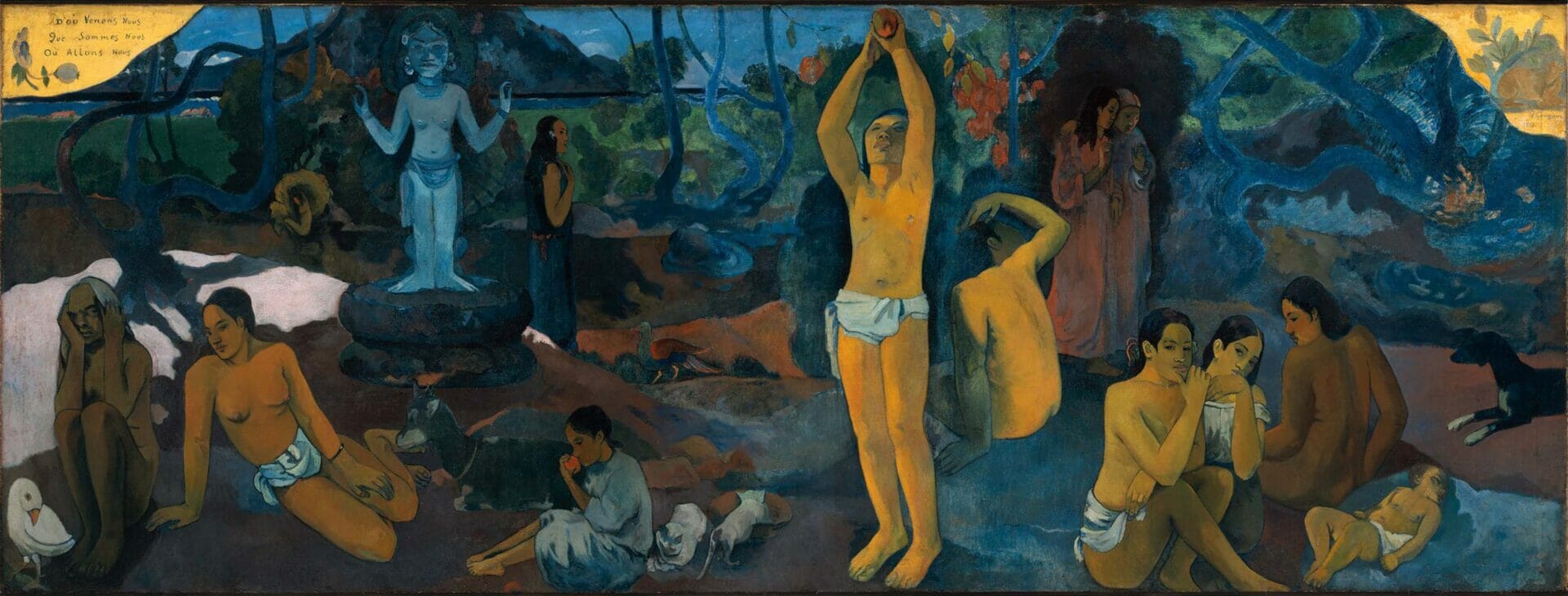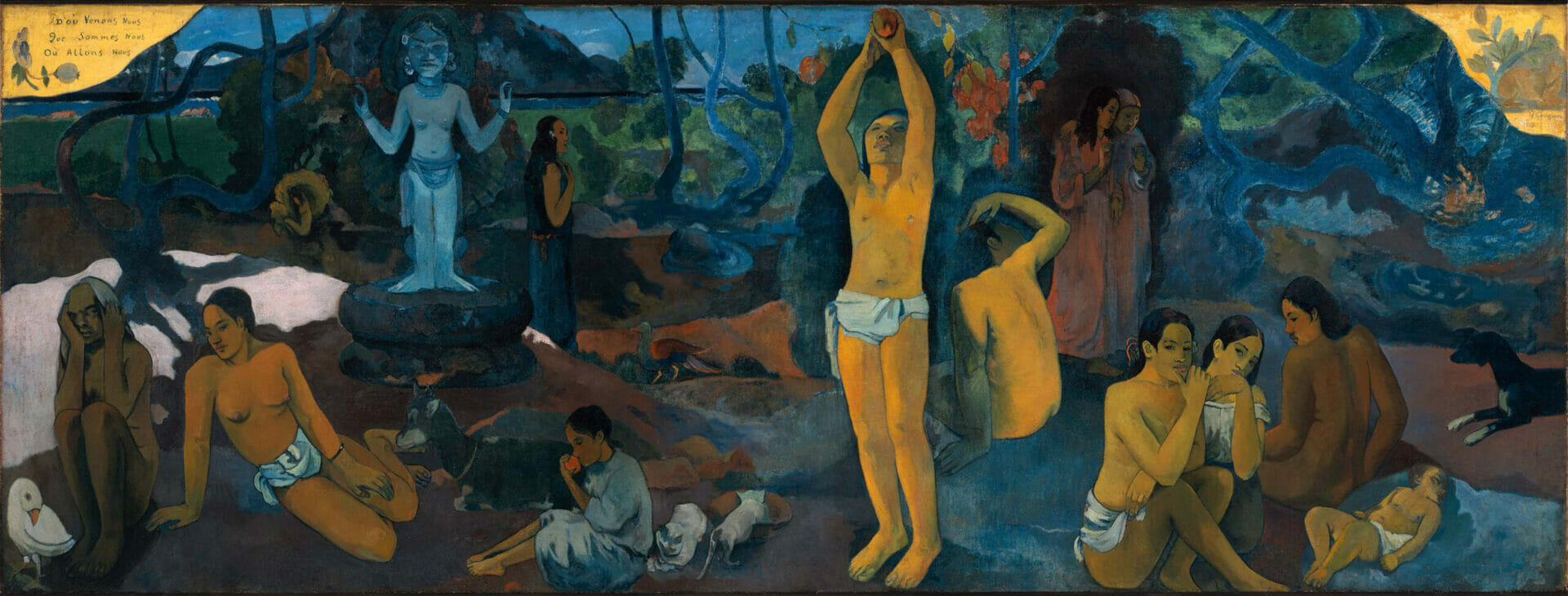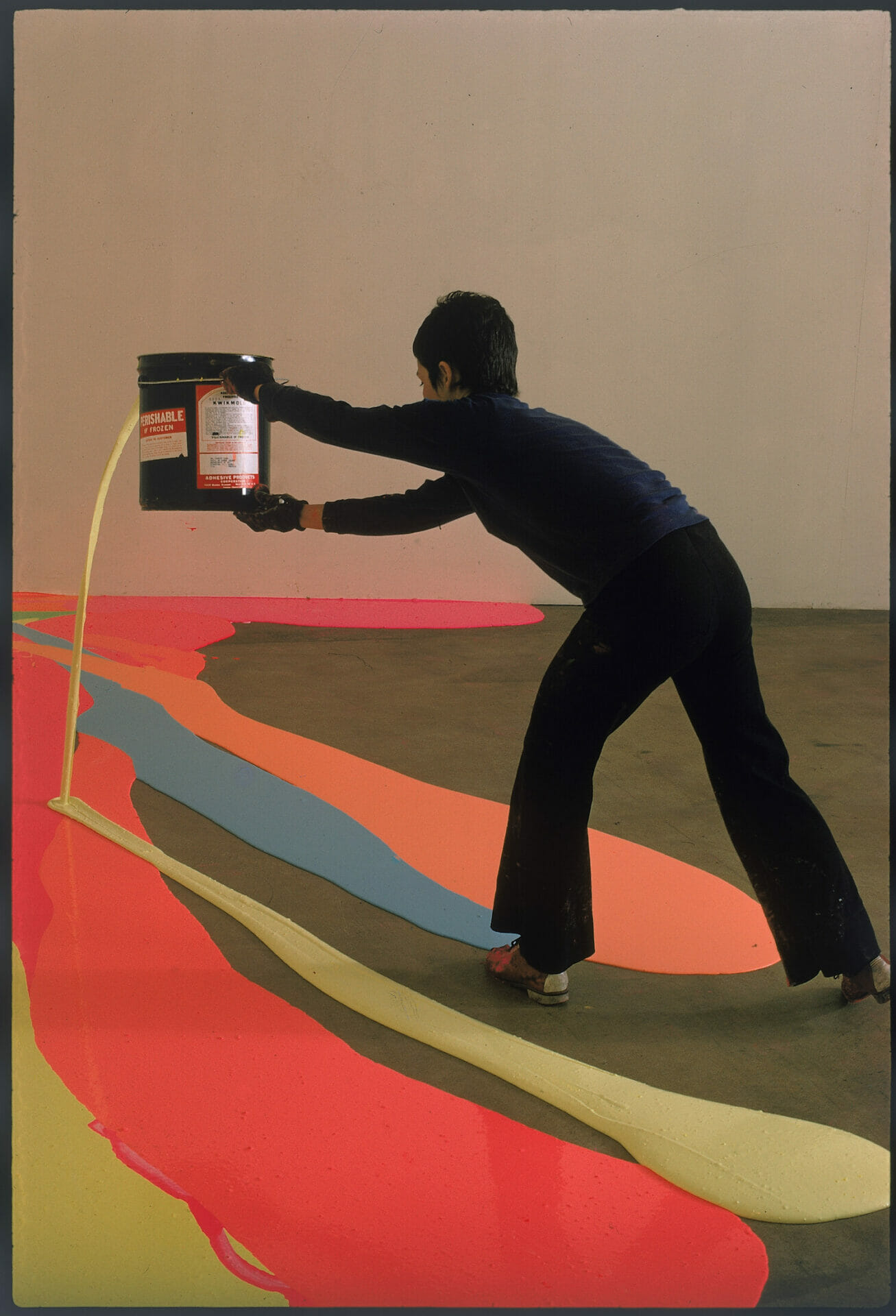
Paul Gauguin's pictorial testament
Artist
Year
Country
Format
Location of the visited exhibition
Material
Dimensions
The French artist Paul Gauguin, the painter of the Tropics, the leader of symbolism and the precursor of Fauvism, has until today remained unclassified. His creativity flourished in many domains, amongst which are painting, sculpture, engraving, and writing. Where Do We Come From? What Are We? Where Are We Going? is a painting that summarizes Gaugin’s artistic ideas and reflects his tragic quest for paradise.
The doomed painter of the tropics
Paul Gauguin’s tragic life story is the consequence of a series of decisions pushing himself further into the myth he created around the concept of the savage. Gauguin was a talented businessman, and he married a Danish woman with whom he had many children. His passion and talent in art slowly came to trouble this perfect bourgeois couple.
In 1879, at the age of thirty-one, Gauguin exhibited his paintings with the Impressionists at the invitation of Camille Pissarro and Edgar Degas.
The Impressionist group gradually divided into stylistic trends. The first were supporters of a naturalist style of painting which reflected the immediate sensations. Like Pissarro, Claude Monet, Pierre-Auguste Renoir, they painted the slightest light variations, which allowed them to capture the instant in the object itself. A second group defended a more constructed type of painting like Paul Cézanne. For them, the structure is dominant, even though neither proportions nor mathematical perspectives were respected. The third group took one step further by applying a scientific approach, like George Seurat and Paul Signac. They developed the technique of pointillism, dots of pure colors reconstructing an image in the eye of the viewer. Gauguin situated himself between the diluted visions of the first and the constructive force of the seconds.
His success in painting stirred financial issues in his marital life. However, he was sure that painting could save him. To push it further, he decided to reconnect to his true nature, to live in an untamed world.
The quest for the savage
After that, he went on exploring the rural universe of Brittany, fascinated with this peaceful world, as if stuck in time. He ventured into Latin America before deciding to live in Oceania. There, he wanted to live his utopia, to dedicate his life to sensuality, joy, and to creation. In effect, he wrote to a friend that in Oceania life is cheap and he would not have any Europeans around. He would live like a lord with his small fortune and a tidy workshop.
This attitude revealed the orientalist ideas that influenced his view of the world. In 1979, Edward W. Said developed the concept of Orientalism to criticize the discourse held by Western painters and intellectuals in their portrayal of other cultures as naive, exotic and living in a backward society. This manufactured portrait of the otherness stood in opposition to the Western world, more rational, modern and essentially materialistic.
In his defense, Gauguin learned about the local culture, which offered him a source of creativity. For instance, he studied the Tahitian stories of genesis, the legends and mythical ancestors of the Maori. The artist was truly enchanted with this universe, and hence he painted fantastical scenes mixed with the daily routines of Tahitian life.
Gauguin returned to Paris to sell his production of sixty-six paintings, accompanied with personal notes. However, Parisians found his art too bright and barbarian. Pissarro even accused Gauguin of looting the savages of Oceania. As a consequence of the struggles to find recognition for his art in Paris, Gauguin definitively retreated to Tahiti for good.
Looking for the big picture
Gauguin painted Where Do We Come From? What Are We? Where Are We Going? in Tahiti. The painting was created during a period of great personal crisis for the artist. Indeed, 1897 was a particularly dark year for Gauguin. He was accumulating health problems and mounting debts. He also learned that his daughter died of pneumonia.
Gauguin concentrated his energy to complete this large painting, sumptuous and enigmatic. In a creative outburst, he achieved this before attempting suicide. This masterpiece resumes the philosophy and the aesthetics of the artist. In other words, it constitutes a pictorial testament of his ideas.
The viewer needs to read the painting from right to left, where the cycle of life goes on from birth to death, under the indifferent gaze of the blue deity. The baby and the elder women represent these two stages respectively, each at one corner of the canvas. In between, the scenes of adulthood unfold with Gauguin’s typical subjects: reclining nudes, totems, and intense contrasting colors of yellow, purple and blue.

Symbolism: artistic otherworldly visions
The Symbolist movement tends to favor the fantastic and the imaginary over reality. Depicting the real was less important than showing emotions like anxiety, sin, love, death and the unknown. Moreover, Symbolists were interested in exploring mysticism, spirituality and dreams. Yet, they were also preoccupied with the search for the real universal truth. In this painting, Gauguin raises mystical questions that troubled many symbolists.
During the last years of his life, Gauguin studied religions to find answers to the mysteries of the universe. He constituted a personal mythology, combining Buddhist philosophy, his Catholic education and animist beliefs from native Polynesian culture. His symbolist artwork explores the line between the visible and the invisible. It expresses the inner world of visions, emotions, and dreams. Certainly, this painting offers different interpretations of the mystery of life. However, its ambiguous symbols still leave the questions of the title unanswered.
Where Do We Come From? What Are We? Where Are We Going? was exhibited some months later in Gallery Vollard in Paris, without much success. In the end, Gauguin died having the feeling of being misunderstood. Similar to his fellow friend Van Gogh, they were painters unrecognized by the public of their time. And indeed, Gauguin remained for a long time perceived in France as a damned creator, a prisoner of his own myth.
Tag
Buy a ☕ for Hypercritic








